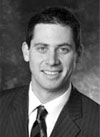 By Shane Brunner, Merchant & Gould PC, Madison
By Shane Brunner, Merchant & Gould PC, Madison
Feb. 2, 2011 – The creation of regional offices of the United States Patent and Trademark Office (USPTO) will help to reduce the agency’s reported backlog of more than 700,000 pending patent applications, as part of President Obama’s goal of doubling United States exports within the next five years. The issuance of a patent is often an important step in commercializing an invention. By reducing the backlog and accelerating the examination process, inventors will bring their products to market sooner and hopefully increase exports and ignite the economy.
The first regional office will open in Detroit in late spring or summer of this year. Other regional offices are expected to be named soon. The addition of regional patent offices will help reduce the backlog of pending patent applications and speed the average time of patent application examination from three years to one by increasing the number of highly trained and experienced patent examiners.
The USPTO currently employs more than 6,000 patent examiners at its only office in Alexandria, Va. Each regional office may employ 100 or more additional patent examiners. In addition to increasing the number of examiners, the USPTO hopes that it can better retain experienced examiners in regional offices, which have a lower cost of living than the Washington, D.C., area. Historically, patent examiners have had one of the highest turnover rates of all government employees – one examiner leaves for every two that are hired. This high turnover rate has contributed to the application backlog and slowed the examination process.
Patent examiners are scientists and engineers with basic training on the legal criteria for issuing patents. They examine patent applications in their fields of expertise. The USPTO tries to match a patent application with the examiner’s expertise. Regional patent offices will help the USPTO to better match examiners with patent applications by providing an expanded pool of potential examiners and examiners with expertise in the technical fields of the region. For example, the USPTO’s expansion into Detroit could provide the USPTO with access to a large group of scientists and engineers involved with the automotive industry. This expertise may lead to more efficient and higher quality examinations of automotive-related patent applications.
Examiners often gain a better understanding of a patent application by meeting face-to-face with inventors and their attorneys. Regional patent offices may facilitate these meetings by reducing the inconvenience and cost of travel for inventors and their attorneys. This may be especially true for individual inventors and small businesses with limited time and money resources. For example, it may be more convenient and less expensive for a Wisconsin-based inventor to travel to Detroit for an examiner meeting than to travel to Washington, D.C.
A subtle benefit of regional patent offices to the USPTO is the increased likelihood of remaining fully funded. Since its inception, the USPTO has been located in one congressional district. By having regional offices across the country in multiple congressional districts, the USPTO may receive broader congressional support for its funding and thereby increase the likelihood that it has adequate funds to reduce the backlog and speed up the examination process.
Although the USPTO has declared some plans for its regional offices, it is not yet clear how the regional offices will be used. For instance, the USPTO has not explained whether patent applicants will submit patent applications to their nearest office for examination or whether all applications will still be submitted to the Alexandria office and then allocated to the regional offices for examination. And, if the applications are allocated to the regional offices for examination, will the allocation be based on the geographic location of the applicant or the technological field of the application?
In selecting Detroit as the first regional office, the USPTO considered several factors, including the percentage of scientists and engineers in the area, access to major research institutions, and the volume of patent activity and patent attorneys in the area. Based on these factors, the Milwaukee area could be a viable candidate: the region includes many scientists and engineers, such as those involved in Wisconsin’s manufacturing and biotechnology industries, and includes one of the nation’s premiere research institutions in the University of Wisconsin. However, the major obstacle facing the selection of Milwaukee for a regional office is its proximity to Detroit and the likelihood that the USPTO will want to spread its offices across the country. Although the USPTO has not named future locations, intellectual property publications and blogs have speculated that the next locations may be in Austin, Minneapolis, Denver, or Seattle.
The USPTO will likely experiment with the Detroit office and other regional offices it later names to determine how to best use those offices to reduce the backlog, improve the patent examination process, create jobs, and stimulate the economy.
About the author
Shane Brunner is an attorney in the Madison office of Merchant & Gould PC. He focuses in complex intellectual property litigation involving patents, trademarks, and trade secrets in a variety of industry sectors and technical fields. He can be reached at (608) 280-6753 or at sbrunner@merchantgould.com.
